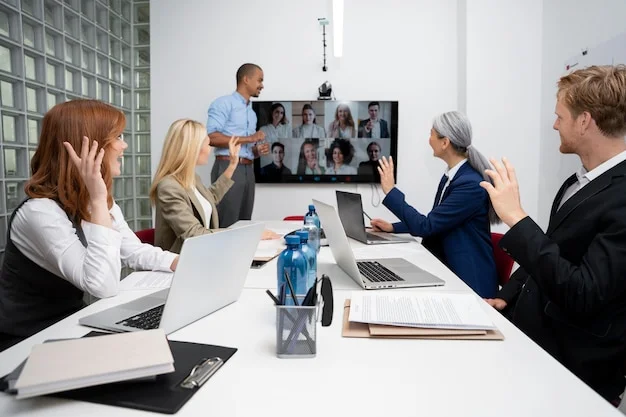Remote work has altered how businesses operate, leading to changes in the way meeting spaces are used and designed. Organizations have adapted by incorporating technology-driven solutions, flexible office arrangements, and new collaboration methods. The demand for traditional meeting rooms has shifted, giving way to hybrid models that cater to both in-person and remote participants.
The Shift from Traditional to Hybrid Meeting Spaces
The traditional meeting room was once a staple in office environments. It served as a space where teams gathered to discuss ideas, present strategies, and finalize decisions. With the rise of remote work, the function of these spaces has changed. Physical attendance is no longer the only way to participate in discussions, leading to a reconfiguration of how meeting rooms are set up.
Hybrid meeting rooms now bridge the gap between remote and in-office employees. These spaces are designed to support video conferencing tools, interactive displays, and cloud-based collaboration platforms. High-quality microphones, cameras, and speaker systems ensure that remote participants can engage in discussions without any communication barriers. The shift from traditional formats has improved accessibility, allowing businesses to include remote employees and clients in discussions without geographical constraints.
Increased Demand for Flexible and On-Demand Meeting Rooms
Companies no longer require large, permanent meeting spaces that remain unused for long periods. Instead, they seek flexible options that align with changing workplace dynamics. The rise of coworking spaces and on-demand meeting room rentals reflects this change. Businesses can now book rooms as needed, reducing overhead costs while maintaining access to professional spaces when necessary.
Meeting rooms for rent in coworking environments are equipped with modern technology and offer flexible booking options. Companies can reserve rooms by the hour or day, allowing them to scale their needs based on demand. This model benefits organizations that operate remotely but still require occasional in-person collaboration.
Advanced Technology Integration in Meeting Rooms
Remote work has accelerated the adoption of advanced technology in meeting spaces. Organizations have invested in tools that enhance virtual communication and collaboration. Video conferencing platforms are now equipped with artificial intelligence features, such as real-time transcription and automatic speaker tracking. These enhancements improve engagement and ensure that discussions remain productive.
Cloud-based meeting room management systems have also become standard. Employees can schedule, access, and manage meetings through centralized platforms. These systems help avoid scheduling conflicts and ensure that rooms are utilized effectively. Touchless technology, including voice-activated controls and automated check-ins, further enhances the user experience.
Redefined Office Space Utilization
Many companies have reduced their physical office space due to remote work. Instead of maintaining large office layouts with multiple meeting rooms, they have restructured their spaces to focus on collaboration. Meeting rooms are now designed flexibly, featuring movable furniture and adaptable layouts catering to different meeting formats.
Some businesses have repurposed traditional office spaces into shared collaboration areas. These environments support brainstorming sessions, team discussions, and interactive workshops. The focus is on creating spaces that encourage engagement rather than rigid, boardroom-style meetings.
Enhanced Employee Experience and Productivity
The shift in meeting room design has also improved employee experience. Traditional meetings often required employees to commute to physical locations, which could be time-consuming and disruptive. Remote-friendly meeting rooms have eliminated this limitation, allowing employees to join discussions from wherever they feel most comfortable.
Hybrid meeting spaces also support different working styles. Some employees thrive in in-person settings, while others prefer remote participation. The ability to choose between these options has led to greater flexibility and improved productivity. Employees can focus on work without unnecessary interruptions while still being part of important discussions.
Challenges of Hybrid and Remote Meeting Rooms
While the benefits of remote-friendly meeting rooms are significant, they also present challenges. Technical issues, such as poor connectivity, audio lag, or software incompatibility, can disrupt virtual meetings. Organizations must invest in reliable infrastructure to minimize these disruptions.
Another challenge is maintaining engagement in hybrid meetings. Remote participants may feel disconnected from in-office discussions, leading to reduced interaction. Meeting facilitators must actively involve all attendees, ensuring that remote employees have opportunities to contribute. Visual collaboration tools, such as shared whiteboards and screen annotations, help bridge this gap.
Security is another concern. Organizations must implement strict cybersecurity measures with sensitive information being shared across digital platforms. Secure network connections, encrypted communication tools, and controlled access to virtual meeting rooms help protect business data.
The Future of Meeting Rooms in a Remote-First World
The evolution of meeting rooms will continue as remote work remains a standard practice. Organizations will invest in smarter, more interactive meeting spaces catering to in-person and remote collaboration. The integration of virtual reality and augmented reality may further enhance meeting experiences, allowing participants to engage in discussions through immersive environments.
Companies will also focus on improving meeting efficiency. Shorter, more structured meetings will become the norm, reducing unnecessary time spent in discussions. AI-driven insights and analytics will help teams optimize meeting schedules and identify areas for improvement.
As businesses adapt to the changing work environment, meeting rooms will continue to evolve. The focus will be on creating inclusive, technology-enabled spaces that enhance communication and collaboration. Remote work has reshaped the industry, and the future of meeting spaces will reflect this shift toward flexibility and innovation.







